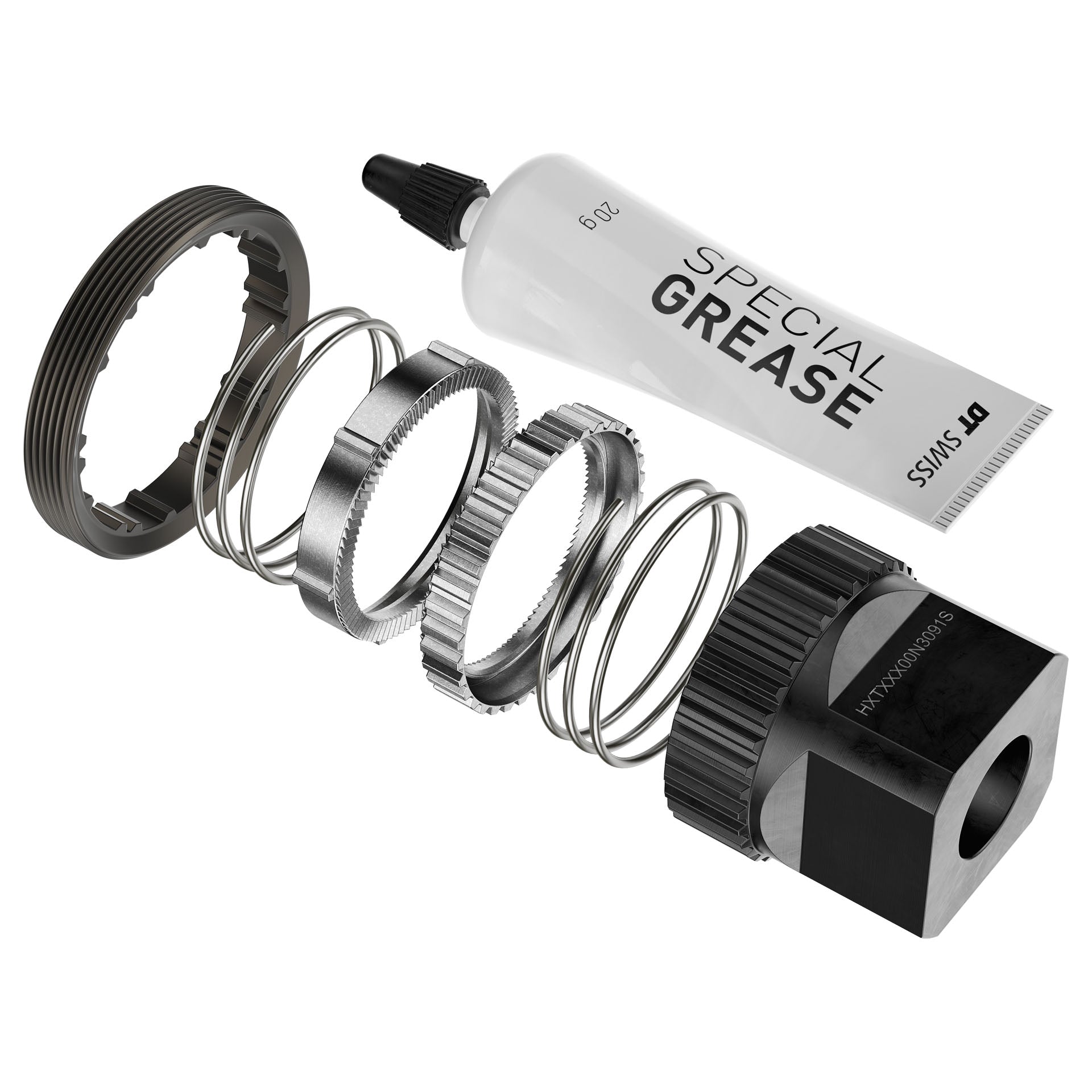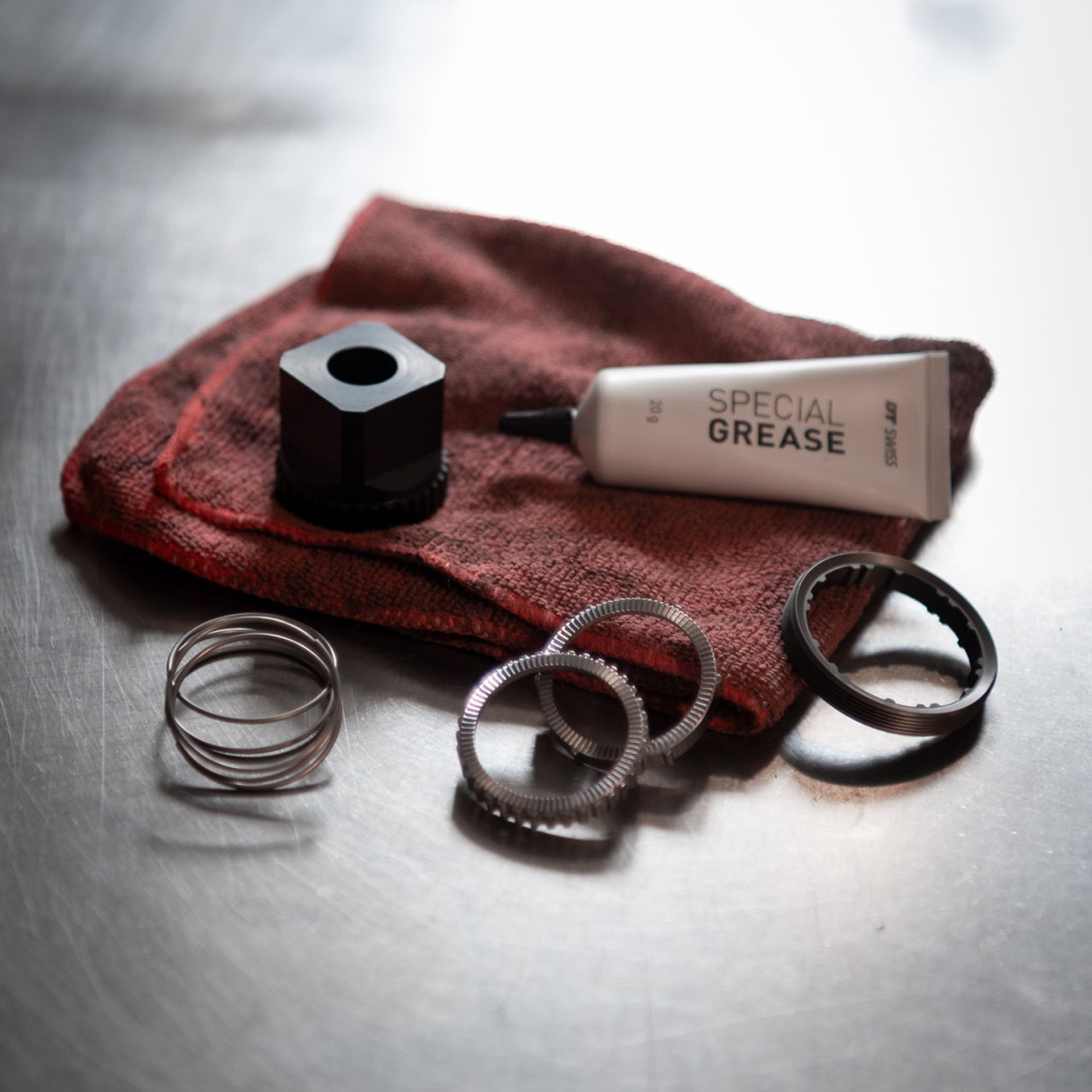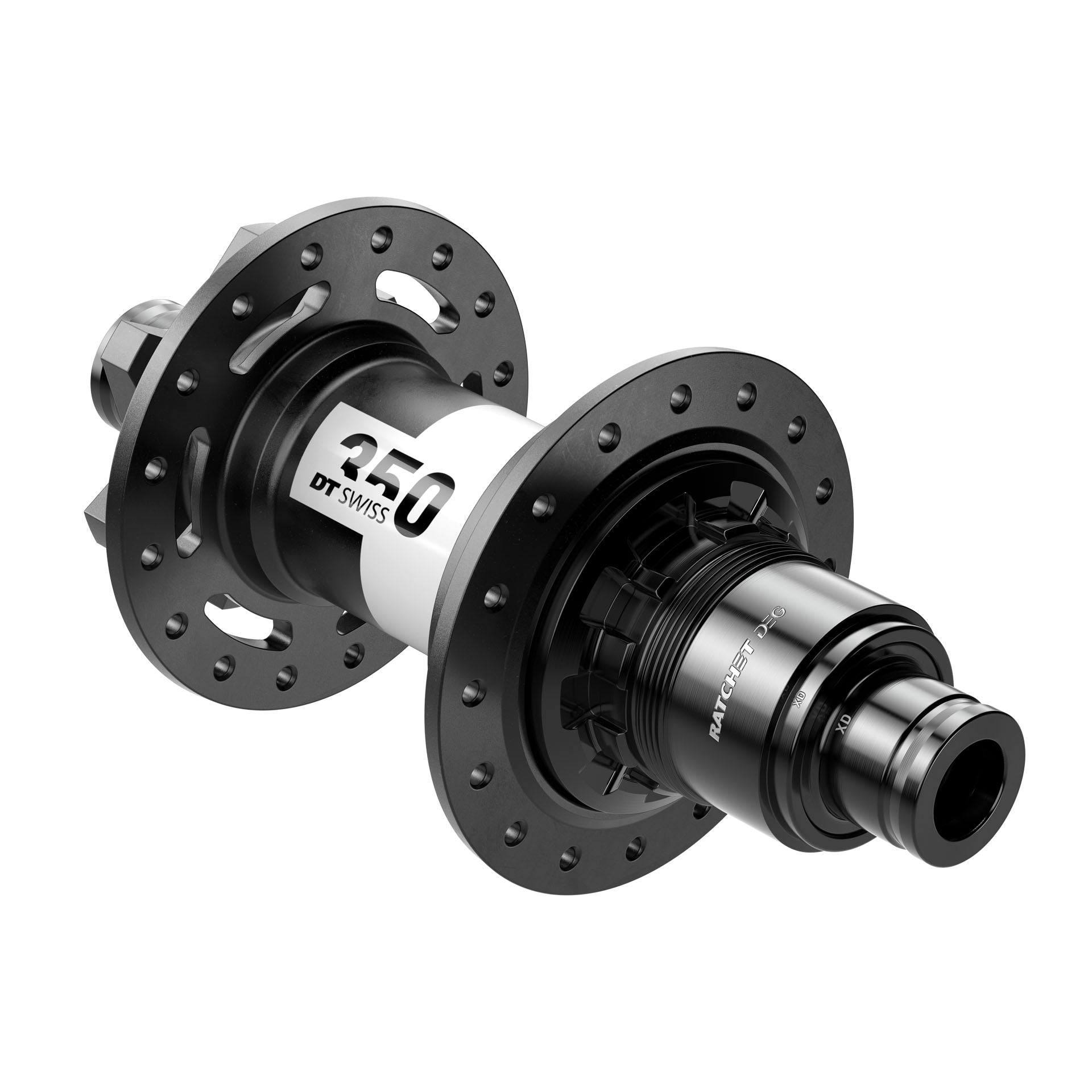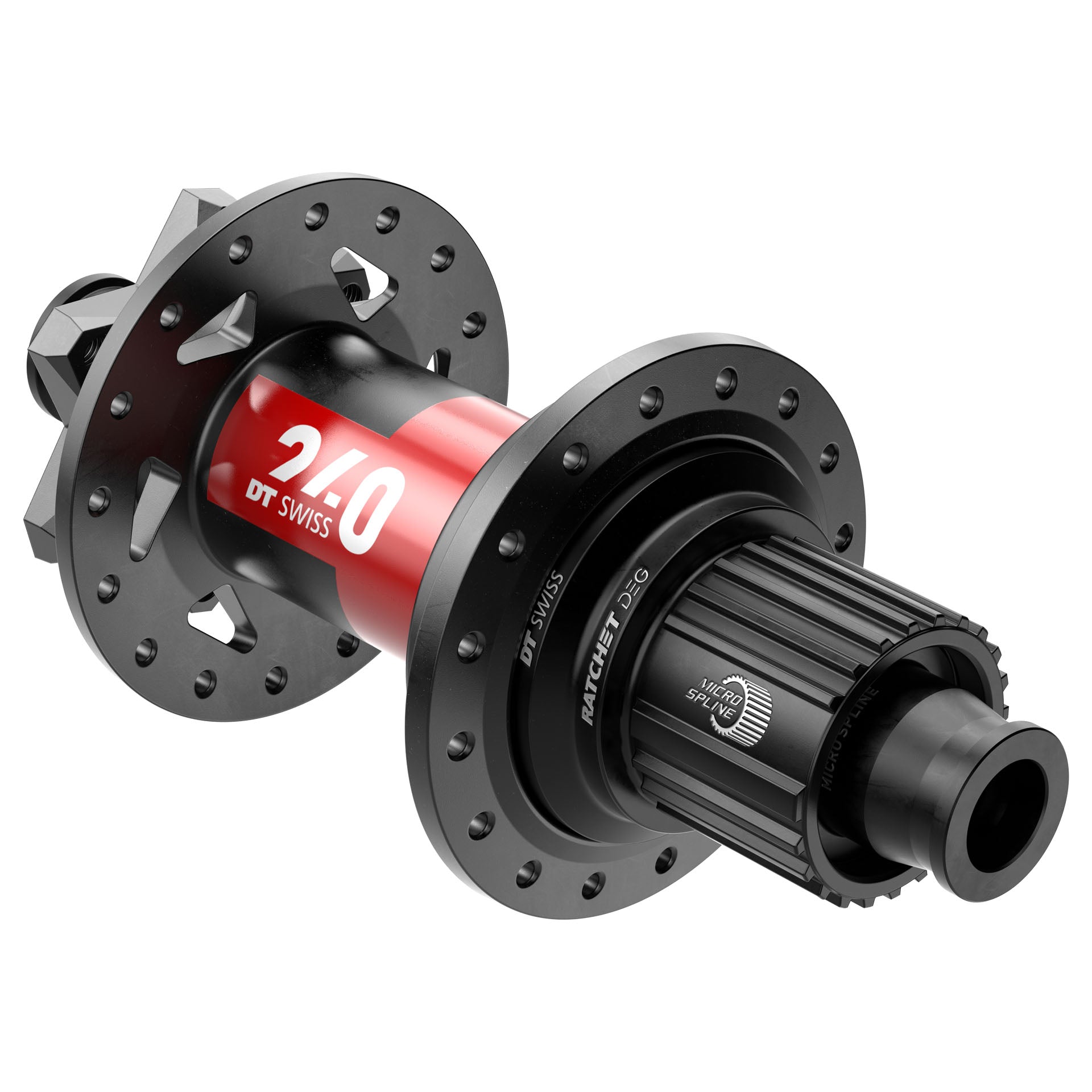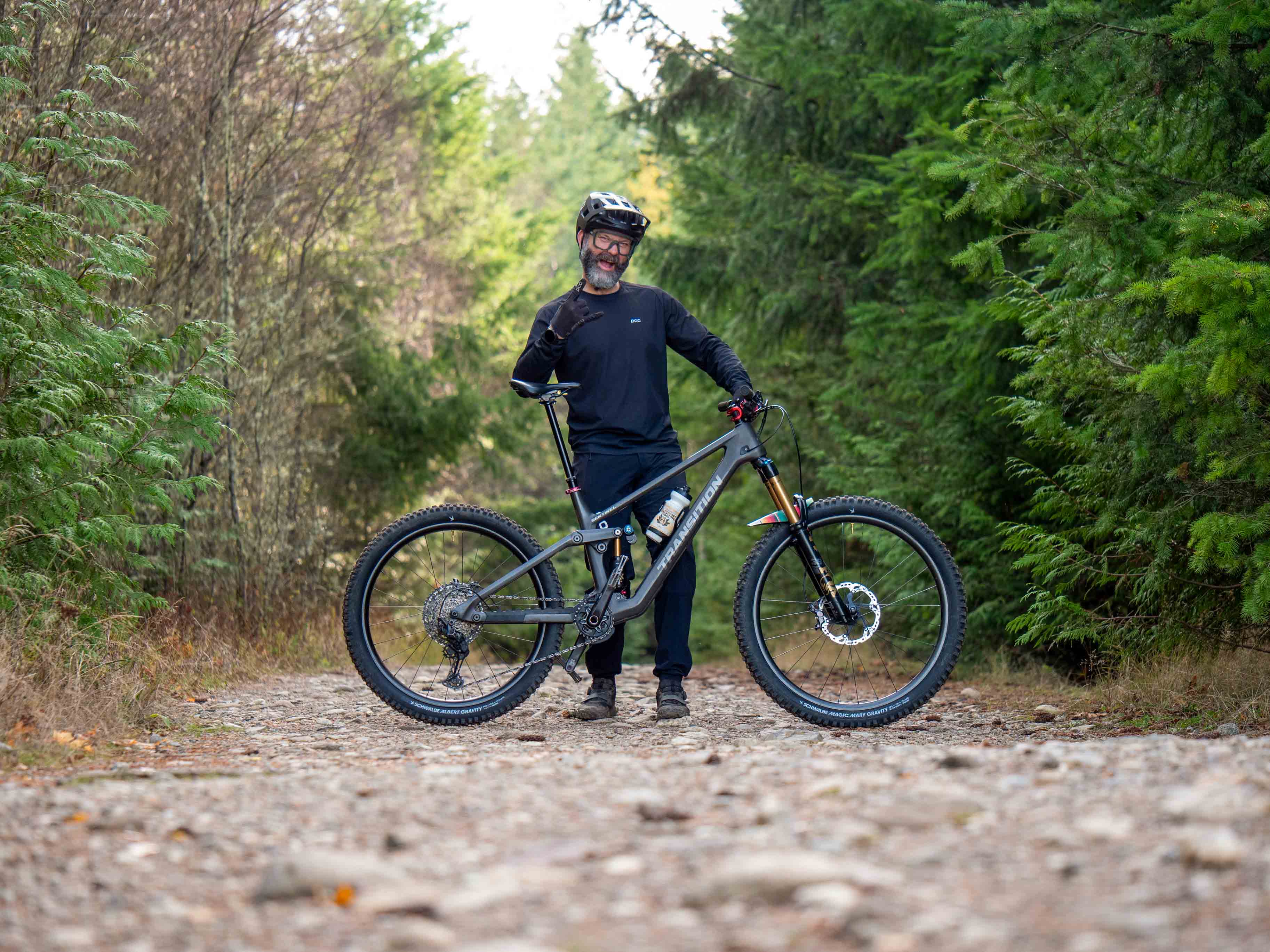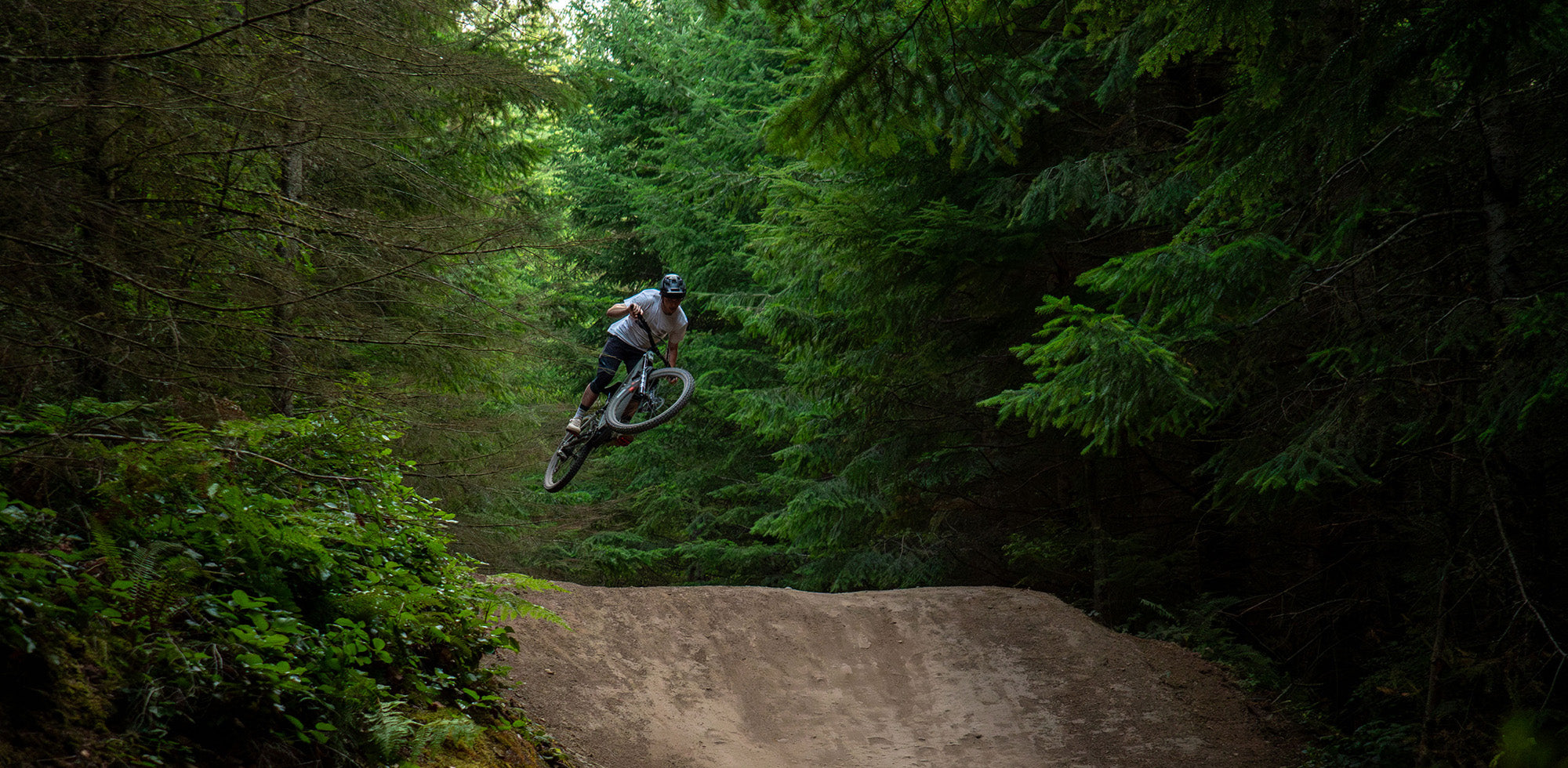During my relatively brief stint in industry, I've noticed a pattern of conversation dominated by specific trends. The most recent examples to come to mind are mixed-wheel bikes and electronic shifting, having a stranglehold on bike shop banter. However, another topic has recently captivated discussion, sweeping throughout World Cup pits and online forums alike: pedal kickback. More specifically, anti-pedal kickback devices.
In pursuit of the marginal gains needed to win a World Cup downhill race, DT Swiss has developed their own anti-kickback device, the Degrees of Freedom (DF) upgrade kit. Compatible with DT Swiss DEG hubs, this upgrade is DT’s solution for combating drivetrain forces in pursuit of ideal descending performance.

What is Pedal Kickback?
In short, pedal kickback is the tension put through the drivetrain as a bike compresses its rear suspension, causing the cranks to rotate against the rider. Kickback is a by-product of the chainline lengthening as the rear axle moves further away from the bottom bracket. The degree to which this feedback can be felt varies greatly depending on suspension design and hub engagement. However, the sensation and its perceived effect on descending performance have been a primary topic of discussion in the industry. In the past few years, anti-pedal kickback devices have become a common sight in World Cup downhill, with riders looking to minimize drivetrain feedback from their frame’s suspension.
DEG Degrees of Freedom Upgrade Kit - 90T
Intended Use: Trail, Enduro, and Downhill
Engagement: 90 Teeth
Degrees of Float: 10° and 20°

How Does the DEG Degrees of Freedom Work?
By replacing the hub shell interface of their DEG hub, the DEG DF upgrade provides riders with three possible positions or “degrees of freedom” compared to a standard hub. Riders can pick between a 10-degree, 20-degree, or a standard, 0-degree setting. The 0-degree position engages as a standard DEG hub typically would, with the other two options providing a range of freedom, aiding in decoupling drivetrain forces from suspension performance.

DT Swiss DF Upgrade Kit Installation
Installing the DT Swiss DEG DF kit is straightforward, requiring a vice and DT’s specialty tool, using some muscle to unthread the hub shell threaded ring, and replacing it with the three-position ring included in the DF upgrade kit. Maintaining an identical star ratchet design, the hub shell side is replaced with the upgrade kit ratchet, allowing it to slot into one of the three positions for various amounts of float.
Ride Impressions
I have developed a solid feeling for how standard 240 DEG hubs perform, running them exclusively on my trail bike for the past two years. With an ideal baseline for testing the all-new DF Upgrade Kit, I rotated between the three positions across a variety of terrain. Unsurprisingly, the 0-degree setting feels identical to a standard 240 DEG hub. It doesn't introduce any discernible amount of play to the hub's engagement compared to the standard 90-tooth DEG ratchet.

10-Degree Position
In the middle-most, 10-degree setting, the DF upgrade kit provides a window of float without overly impacting pedaling characteristics. While the slight amount of lag before engagement is initially noticeable, the deadband introduced at the 10-degree setting doesn’t detract from singletrack pedaling. The momentary lag before engagement is identical to the feeling of a 36-tooth 350 hub and goes unnoticed when maintaining a consistent cadence.
Aboard a standard DEG 240, I never felt that the effects of pedal kickback were detrimental or limited my descending ability. However, in comparison, the 10-degree position gave me a sense of how much drivetrain feedback and noise I had become tolerant of. When descending, the 10-degree position significantly calms the drivetrain forces underfoot. I wouldn’t categorize the change in feeling as “ride-altering,” but the introduction of the DF upgrade kit greatly decreased drivetrain noise, providing for a calmer overall ride feel.
On big compressions and through harsh, root-riddled sections of trail, my bike felt generally less “busy” beneath me. The impact of the DF upgrade kit is not as cause-and-effect as “I had so much pedal kickback, and now I don’t,” but rather a tangible refinement in overall ride quality, quieting both drivetrain noise and harsh feedback through the cranks.

20-Degree Position
The 20-degree setting is the most extreme, providing a noticeable amount of dead space before engagement when pedaling. At 20 degrees, the amount of slop between hub engagement was more than I preferred for typical rides. On the flip side, it is also the most “settled” feeling when descending. Unless holding a consistent cadence on fireroad, I found that the full 20-degree was more distracting on the climb than the descending benefits were worth. Descending, this position builds upon the calming effect provided by the 10-degree position, offering a ride feel that is nearing the verge of a chainless feel. Drivetrain feedback, chainslap, and overall noise are significantly decreased in the 20-degree setting. This extreme 20-degree setting is ideal for downhill riding or shuttling scenarios, when pedaling is limited and descending performance is paramount.
Verdict
The DT Swiss DEG DF upgrade kit is one of the most simplistic and minimalist solutions currently available for limiting drivetrain feedback. The various positions have a noticeable impact, minimizing feedback and drivetrain noise, and the tool-free adjustment allows riders to easily swap between settings. For riders currently running a DEG hub or those looking to upgrade, the DF upgrade kit is the most straightforward option currently available to restrict kickback and unwanted drivetrain noise.


